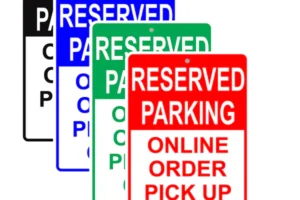In today’s digital landscape, radio station email lists have become an essential resource for advertisers. These lists comprise email addresses gathered from radio station audiences, providing a direct and personalized communication channel. By leveraging radio station email lists, advertisers can target listeners more effectively, enhancing their outreach and engagement efforts. This blog post explores the advantages of utilizing these lists to amplify the success of advertising campaigns.
Benefits of Using Radio Stations Email Lists for Advertisers
Radio station email address lists allow advertisers to reach a specific audience based on listener preferences, demographics, and behavior. This targeted approach ensures that messages are relevant and engaging, leading to higher engagement rates. Since the audience already has an interest in the radio station, emails from the station are more likely to be opened and acted upon. This trust translates to improved open rates, click-through rates, and conversion rates.
The Power of Email Marketing
Email marketing remains one of the most cost-effective and high-return strategies available today. With an average return on investment (ROI) of $42 for every dollar spent, it’s no wonder that businesses are pouring resources into this channel. Email provides a direct, personalized line of communication with consumers, making it an ideal medium for targeted outreach.
But what if you could combine the power of email marketing with the broad audience reach of radio? That’s where radio station email lists come in. These lists are comprised of individuals who have voluntarily subscribed to receive information from radio stations, which may include updates on local events, contests, special promotions, and more. This audience is already engaged with the station and its content, making them a valuable target for businesses looking to maximize their advertising efforts.
Strategies for Maximizing Advertising ROI
Crafting engaging email content tailored to radio listeners is key to maximizing ROI. Personalization, captivating subject lines, and clear calls-to-action enhance email effectiveness. Timing plays a crucial role; align email campaigns with radio programming to boost engagement. For example, sending emails shortly before or after popular shows can significantly improve open rates. By considering audience preferences and behaviors, advertisers can create messages that resonate deeply, driving better results.
Why Radio Station Email Lists Work
1. Highly Targeted Audience
Radio stations cater to specific demographics, whether by genre, location, or even time slot. For example, a country music station in the Midwest will attract a different audience compared to a top 40 station in a metropolitan area. This segmentation allows advertisers to pinpoint exactly who they want to reach.
When radio stations gather email subscribers, they often segment these individuals based on factors such as their preferences, location, and listening habits. This makes radio station email lists exceptionally targeted. Instead of blasting your message to a broad, generic audience, you’re able to tailor your campaign to an already engaged group of listeners who fit your ideal customer profile.
2. Engaged and Receptive Audience
One of the biggest advantages of using radio station email lists is that the audience is already engaged with the station. They’ve opted in to receive updates, promotions, and relevant information, meaning they’re already receptive to what the station is promoting. As a result, emails sent through these lists tend to have higher open rates, click-through rates, and engagement levels than those sent to a generic, unqualified list.
This engaged audience has already demonstrated an interest in entertainment, local events, and promotions, making them more likely to interact with advertisements related to these areas. When you align your campaign with content that resonates with them, you’re tapping into a high-quality, receptive audience.
Measuring the Impact of Email Campaigns
To gauge the effectiveness of email campaigns, focus on key performance indicators (KPIs) such as open rates, click-through rates, conversion rates, and unsubscribe rates. These metrics offer valuable insights into the campaign’s performance and highlight areas needing improvement. Tools like Mailchimp, Constant Contact, and HubSpot provide comprehensive analytics, enabling advertisers to monitor KPIs and make data-driven decisions to enhance their campaigns. Regularly reviewing these metrics helps in understanding audience behavior, refining targeting strategies, and optimizing overall campaign effectiveness.
Case Studies and Success Stories
Numerous advertisers have leveraged radio station contact lists to enhance campaign performance. For instance, a local business collaborated with a radio station to promote a community event. Targeted emails sent to the station’s audience boosted attendance by 30%, significantly improving their ROI.
Another notable example involves a national brand that used a radio station email list free of charge to launch a new product. By aligning email content with the station’s programming, the brand saw a 25% increase in sales compared to previous campaigns that did not utilize targeted lists.
Future Trends in Radio Station Email Marketing
As technology continues to advance, radio station email marketing will likely see more integration with various media channels such as social media and mobile apps. This multi-channel approach can create a cohesive brand experience, capturing audience attention across different platforms. Additionally, improvements in data analytics will enhance audience segmentation and personalization, making email campaigns even more effective. Advertisers will be able to tailor messages with greater precision, ensuring content resonates strongly with specific listener groups. Expect innovations such as AI-driven insights and predictive analytics to play a pivotal role in refining strategies, ultimately leading to higher engagement and conversion rates.
Conclusion
Radio station email lists are a powerful tool for advertisers aiming to enhance their marketing strategies and achieve superior results. By focusing on audience segmentation and personalized messaging, advertisers can ensure their content is both relevant and engaging. Strategic timing of email sends, particularly around popular radio shows, can further boost engagement metrics such as open and click-through rates.
Leveraging analytics tools to monitor key performance indicators allows for continuous improvement and adaptation of campaigns. These insights enable advertisers to fine-tune their approach, ensuring that each email resonates with the targeted audience.

